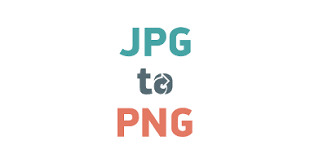Introduction
In the digital age, images are ubiquitous, serving as powerful tools for communication, expression, and storytelling.
Whether you’re a photographer, graphic designer, or social media enthusiast, you’ve likely encountered various image
formats, each with its unique characteristics and uses. One common task faced by many is converting images from
one format to another, such as converting. In this article, we’ll explore the nuances of these two popular
image formats, delve into the benefits of each, and discuss how online JPG to PNG convert can streamline your workflow.
What are the Difference between JPG and PNG?
Before diving into the conversion process, it’s essential to understand the differences between JPG (or JPEG) and PNG formats.
- JPG (Joint Photographic Experts Group): JPG is a lossy compression format commonly used for photographs and complex images. It achieves high levels of compression, making it ideal for reducing file size without significant loss of quality. However, repeated saving and editing of JPG files can result in degradation of image quality due to compression artifacts.
- PNG (Portable Network Graphics): PNG is a lossless compression format known for its ability to support transparent backgrounds and crisp, high-quality images. Unlike JPG, PNG compression preserves every pixel of the original image, making it suitable for graphics, logos, and images with text.
How are JPG and PNG Images Useful?
Both JPG and PNG formats serve specific purposes and offer unique benefits:
- JPG:
- Ideal for photographs and images with complex gradients or color variations.
- Commonly used for web images, social media posts, and digital photography.
- Provides efficient compression for reducing file size while maintaining acceptable image quality.
- PNG:
- Suitable for images requiring transparent backgrounds or crisp, detailed graphics.
- Preferred for logos, icons, illustrations, and images with text overlays.
- Preserves image quality without lossy compression, making it ideal for high-resolution printing and digital design.
The Importance of JPG to PNG Conversion:
Converting images from JPG and PNG format offers several advantages:
- Transparent Backgrounds: PNG format supports alpha channel transparency, allowing for seamless integration of images into various design projects.
- Improved Quality: Converting JPG images to PNG format preserves image quality and eliminates compression artifacts, ensuring crisp, clear visuals.
- Compatibility: PNG images are widely supported across platforms and devices, making them versatile for both digital and print applications.
Conclusion:
In conclusion, the journey from JPG and PNG opens up a world of possibilities for image manipulation, design, and presentation.
Understanding the differences between these formats and leveraging the benefits of each allows users to optimize their visual
content for different purposes. Whether you’re enhancing web graphics, creating print materials, or refining digital artwork,
the ability to convert images seamlessly from JPG and PNG format empowers you to elevate your visual storytelling.
FAQs:
- What is the best online JPG to PNG converter?
- There are several reputable online converters available, including Zamzar, OnlineConvertFree, and Convertio. It’s essential to choose a converter that offers fast processing times, high-quality output, and user-friendly interface.
- Are there any limitations to JPG to PNG conversion?
- While JPG and PNG conversion is a straightforward process, it’s essential to consider file size limitations, especially when dealing with large or high-resolution images. Some online converters may impose restrictions on file size or limit the number of conversions per day for free users.
- Can I convert multiple JPG files to PNG simultaneously?
- Many online converters support batch conversion, allowing users to upload and convert multiple JPG files to PNG format in one go. This feature is especially useful for users with large image libraries or multiple files to convert.
In summary, the transition from JPG to PNG format offers a myriad of benefits, from improved image quality to enhanced
versatility and compatibility. By harnessing the power of online JPG and PNG converters, users can seamlessly transform
their visual assets to meet their specific needs and preferences.
